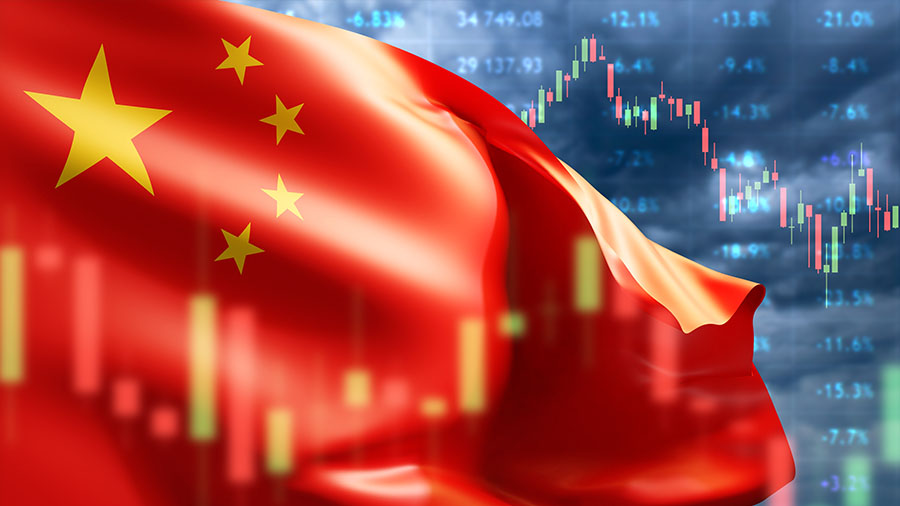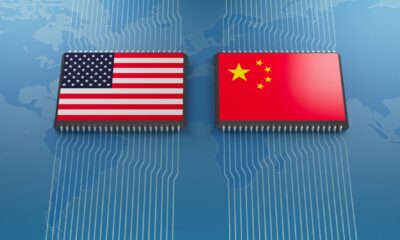China
China Unveils 24 Fresh Initiatives to Draw in Foreign Investment

China’s legislature has released a plan to attract foreign investment, aiming to improve the business environment and expand market access for foreign companies. The plan includes measures to ease administrative burdens and level the playing field for foreign companies, with a focus on key industries like manufacturing and telecommunications. Pilot projects in FTZs will relax restrictions on foreign investment in technological innovation.
China’s legislature has released a new plan to attract foreign investment after a year of falling foreign direct investment inflows. The plan, the latest in a series of efforts to boost foreign capital in China, proposes measures to improve the business environment, ease administrative burdens, expand market access in key industries, and even the playing field for foreign companies. We outline the policy proposals that could benefit foreign companies in the coming years.
The State Council has released a 24-point plan to boost foreign capital in China. The plan, titled the Action Plan to Solidly Promote High-Level Opening Up and Make Greater Efforts to Attract and Utilize Foreign Investment (the “Action Plan”), outlines various measures to attract foreign investment, including expanding market access in key industries, ensuring equal participation of foreign companies in government bidding, and facilitating cross-border data flows.
China has been striving to encourage and support foreign investment in recent years. Efforts ramped up in 2023 when levels of foreign direct investment (FDI) inflows to China fell by 8 percent year-on-year. In July 2023, the State Council issued a similar set of measures that aimed to improve the business environment for foreign companies, with suggestions including measures to strengthen intellectual property rights and ease regulations on cross-border data flows.
In this article, we outline some of the key measures proposed by the State Council to attract foreign investment in 2024.
One of the main measures in the Action Plan is to expand market access for foreign companies by “reasonably reducing” the negative list for foreign investment access. This document lists the industries and sectors that foreign investors are prohibited from participating in, and thus by shortening it, more sectors will become accessible to foreign investors. It was last updated at the end of 2021.
The Action Plan reiterates the directives mentioned in the GWR, stating that the government remove restrictions on foreign investment in the manufacturing sector, and continue to promote the opening up of telecommunications, medical, and other fields.
Meanwhile, the Action Plan also calls for carrying out pilot projects to relax foreign investment access in the field of scientific and technological innovation. This will be carried out in pilot free trade zones (FTZ) such as Beijing, Shanghai, and Guangdong, which will be permitted to select a number of qualified foreign-invested enterprises (FIEs) to expand access in areas such as the development and application of genetic diagnosis and treatment technologies.
This article is republished from China Briefing. Read the rest of the original article.
China Briefing is written and produced by Dezan Shira & Associates. The practice assists foreign investors into China and has done since 1992 through offices in Beijing, Tianjin, Dalian, Qingdao, Shanghai, Hangzhou, Ningbo, Suzhou, Guangzhou, Dongguan, Zhongshan, Shenzhen, and Hong Kong. Please contact the firm for assistance in China at china@dezshira.com.
China
China’s GDP Grows 5% in 2024: Key Insights and Main Factors

In 2024, China’s GDP grew by 5.0%, meeting its annual target. The fourth quarter saw a 5.4% increase, driven by exports and stimulus measures. The secondary industry grew 5.3%, while the tertiary increased by 5.0%, totaling RMB 134.91 trillion.
China’s GDP grew by 5.0 percent in in 2024, meeting the government’s annual economic target set at the beginning of the year. Fourth-quarter GDP exceeded expectations, rising by 5.4 percent, driven by exports and a flurry of stimulus measures. This article provides a brief overview of the key statistics and the main drivers behind this growth.
According to official data released by the National Bureau of Statistics (NBS) on January 17, 2025, China’s GDP reached RMB 134.91 trillion (US$18.80 trillion) in 2024, reflecting a 5.0 percent year-on-year growth at constant prices. During the 2024 Two Sessions, the government set the 2024 GDP growth target of “around 5 percent”.
By sector, the secondary industry expanded by 5.3 percent year-on-year to RMB 49.21 trillion (US$6.85 trillion), the fastest among the three sectors, while the tertiary industry grew by 5.0 percent, reaching RMB 76.56 trillion (US$10.63 trillion) and the primary industry contributed RMB 9.14 trillion (US$1.31 trillion), growing 3.5 percent.
A more detailed analysis of China’s economic performance in 2024 will be provided later.
(1USD = 7.1785 RMB)
| This article was first published by China Briefing , which is produced by Dezan Shira & Associates. The firm assists foreign investors throughout Asia from offices across the world, including in in China, Hong Kong, Vietnam, Singapore, and India . Readers may write to info@dezshira.com for more support. |
Read the rest of the original article.
China
Can science be both open and secure? Nations grapple with tightening research security as China’s dominance grows

The U.S.-China science agreement renewal narrows collaboration scopes amid security concerns, highlighting tensions. Nations fear espionage, hindering vital international partnerships essential for scientific progress. Openness risks declining.
Amid heightened tensions between the United States and China, the two countries signed a bilateral science and technology agreement on Dec. 13, 2024. The event was billed as a “renewal” of a 45-year-old pact to encourage cooperation, but that may be misleading.
The revised agreement drastically narrows the scope of the original agreement, limits the topics allowed to be jointly studied, closes opportunities for collaboration and inserts a new dispute resolution mechanism.
This shift is in line with growing global concern about research security. Governments are worried about international rivals gaining military or trade advantages or security secrets via cross-border scientific collaborations.
The European Union, Canada, Japan and the United States unveiled sweeping new measures within months of each other to protect sensitive research from foreign interference. But there’s a catch: Too much security could strangle the international collaboration that drives scientific progress.
As a policy analyst and public affairs professor, I research international collaboration in science and technology and its implications for public and foreign policy. I have tracked the increasingly close relationship in science and technology between the U.S. and China. The relationship evolved from one of knowledge transfer to genuine collaboration and competition.
Now, as security provisions change this formerly open relationship, a crucial question emerges: Can nations tighten research security without undermining the very openness that makes science work?
Chinese Premier Deng Xiaoping and American President Jimmy Carter sign the original agreement on cooperation in science and technology in 1979.
Dirck Halstead/Hulton Archive via Getty Images
China’s ascent changes the global landscape
China’s rise in scientific publishing marks a dramatic shift in global research. In 1980, Chinese authors produced less than 2% of research articles included in the Web of Science, a curated database of scholarly output. By my count, they claimed 25% of Web of Science articles by 2023, overtaking the United States and ending its 75-year reign at the top, which had begun in 1948 when it surpassed the United Kingdom.
In 1980, China had no patented inventions. By 2022, Chinese companies led in U.S. patents issued to foreign companies, receiving 40,000 patents compared with fewer than 2,000 for U.K. companies. In the many advanced fields of science and technology, China is at the world frontier, if not in the lead.
Since 2013, China has been the top collaborator in science with the United States. Thousands of Chinese students and scholars have conducted joint research with U.S. counterparts.
Most American policymakers who championed the signing of the 1979 bilateral agreement thought science would liberalize China. Instead, China has used technology to shore up autocratic controls and to build a strong military with an eye toward regional power and global influence.
Leadership in science and technology wins wars and builds successful economies. China’s growing strength, backed by a state-controlled government, is shifting global power. Unlike open societies where research is public and shared, China often keeps its researchers’ work secret while also taking Western technology through hacking, forced technology transfers and industrial espionage. These practices are why many governments are now implementing strict security measures.
Nations respond
The FBI claims China has stolen sensitive technologies and research data to build up its defense capabilities. The China Initiative under the Trump administration sought to root out thieves and spies. The Biden administration did not let up the pressure. The 2022 Chips and Science Act requires the National Science Foundation to establish SECURE – a center to aid universities and small businesses in helping the research community make security-informed decisions. I am working with SECURE to evaluate the effectiveness of its mission.
Other advanced nations are on alert, too. The European Union is advising member states to boost security measures. Japan joined the United States in unveiling sweeping new measures to protect sensitive research from foreign interference and exploitation. European nations increasingly talk about technological sovereignty as a way to protect against exploitation by China. Similarly, Asian nations are wary of China’s intentions when it seeks to cooperate.
Australia has been especially vocal about the threat posed by China’s rise, but others, too, have issued warnings. The Netherlands issued a policy for secure international collaboration. Sweden raised the alarm after a study showed how spies had exploited its universities.
Canada has created the Research Security Centre for public safety and, like the U.S., has established regionally dispersed advisers to provide direct support to universities and researchers. Canada now requires mandatory risk assessment for research partnerships involving sensitive technologies. Similar approaches are underway in Australia and the U.K.
Germany’s 2023 provisions establish compliance units and ethics committees to oversee security-relevant research. They are tasked with advising researchers, mediating disputes and evaluating the ethical and security implications of research projects. The committees emphasize implementing safeguards, controlling access to sensitive data and assessing potential misuse.
Japan’s 2021 policy requires researchers to disclose and regularly update information regarding their affiliations, funding sources – both domestic and international – and potential conflicts of interest. A cross-ministerial R&D management system is unrolling seminars and briefings to educate researchers and institutions on emerging risks and best practices for maintaining research security.
The Organisation for Economic Co-operation and Development keeps a running database with more than 206 research security policy statements issued since 2022.
Emmanuelle Charpentier, left, from France, and Jennifer Doudna, from the U.S., shared the Nobel Prize in chemistry in 2020 for their joint research.
Miguel RiopaI/AFP via Getty Images
Openness waning
Emphasis on security can strangle the international collaboration that drives scientific progress. As much as 25% of all U.S. scientific articles result from international collaboration. Evidence shows that international engagement and openness produce higher-impact research. The most elite scientists work across national borders.
Even more critically, science depends on the free flow of ideas and talent across borders. After the Cold War, scientific advancement accelerated as borders opened. While national research output remained flat in recent years, international collaborations showed significant growth, revealing science’s increasingly global nature.
The challenge for research institutions will be implementing these new requirements without creating a climate of suspicion or isolation. Retrenchment to national borders could slow progress. Some degree of risk is inherent in scientific openness, but we may be coming to the end of a global, collaborative era in science.
This article is republished from The Conversation under a Creative Commons license. Read the original article.
China
China Lures Indonesia to Ease Its Position on the South China Sea
A China–Indonesia statement on “joint development in overlapping claims” marks a shift in Indonesia’s stance on the Natuna Islands, influenced by China’s economic diplomacy and domestic needs, impacting regional dynamics.
Shift in Indonesia’s Maritime Position
A recent China-Indonesia joint statement advocating for "joint development in areas of overlapping claims" marks a significant departure from Indonesia’s historical claim over its Exclusive Economic Zone (EEZ) near the Natuna Islands. This change reflects Chinese diplomatic efforts, domestic economic pressures, and challenges within Indonesia’s presidential advisory system, pointing to broader implications for Southeast Asian nations as they navigate regional dynamics.
President Prabowo’s State Visit
During President Prabowo Subianto’s state visit to China in November 2024, Indonesia seemingly recognized the validity of Chinese territorial claims in maritime areas, particularly where China’s nine-dash line intersects with its EEZ. While the joint statement from the visit is not legally binding, it represents a notable shift from Indonesia’s traditional opposition to Chinese claims, which it previously argued were inconsistent with the United Nations Convention on the Law of the Sea.
Economic Incentives at Play
China’s appeal to Indonesia’s domestic economic priorities played a crucial role in this rapprochement. The joint statement included commitments from China regarding fisheries cooperation and significant investments, including US$10 billion across various sectors. Additionally, China pledged support for initiatives like a free lunch program for schoolchildren and affordable housing projects, highlighting how economic incentives can influence geopolitical stances in the South China Sea.
Source : China baits Indonesia to soften South China Sea stance










